With all the commotion surrounding Shimano’s new XT and SLX-12-speed groupsets, it’s easy to forget that the Japanese component colossus just presented a fully revised version of the XT M8100 and SLX M7100 disc brakes. And not only do they look a lot like Shimano’s high-end XTR model, but also deliver an almost identical performance. Read all about it in this test.

The new Shimano brakes in detail
As part of the presentation for the new XT and SLX 12-speed groupsets, Shimano introduced an updated version of their popular SLX and XT disc-brakes. Both models are available either as a XC-specific two-piston brake or an enduro four-pot stopper. The respective two-pot models are based on Shimano’s well-proven design and are therefore compatible with brake-pads of current models (G02A/3A/J02A/3A ). The respective four-pot versions, on the other hand, are based on Shimano’s popular XTR high-end brake and are therefore compatible with the same pads (N03A, N03C, D03S, D02S).
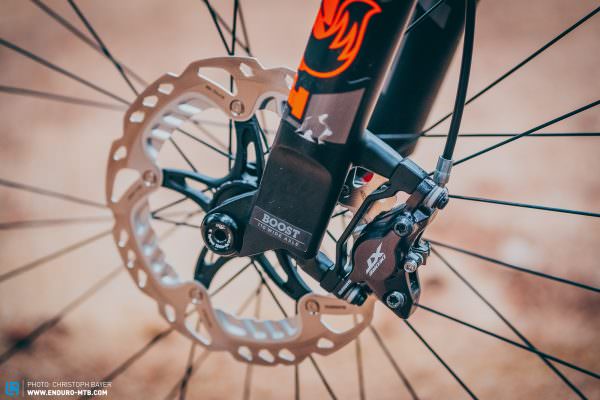

Both the XT and SLX models share the same brake lever, which features Shimano’s SERVO WAVE technology and a new stiffer bar-clamp for a more direct brake-feel. In addition, both models come with a tool-less reach adjustment. The Shimano XT-M8100 lever also features a free stroke adjustment and anti-slip dimples at the end of the lever. In addition, each model has a different surface finish. According to Shimano, however, there are no differences between the two versions in terms of brake-power and durability.
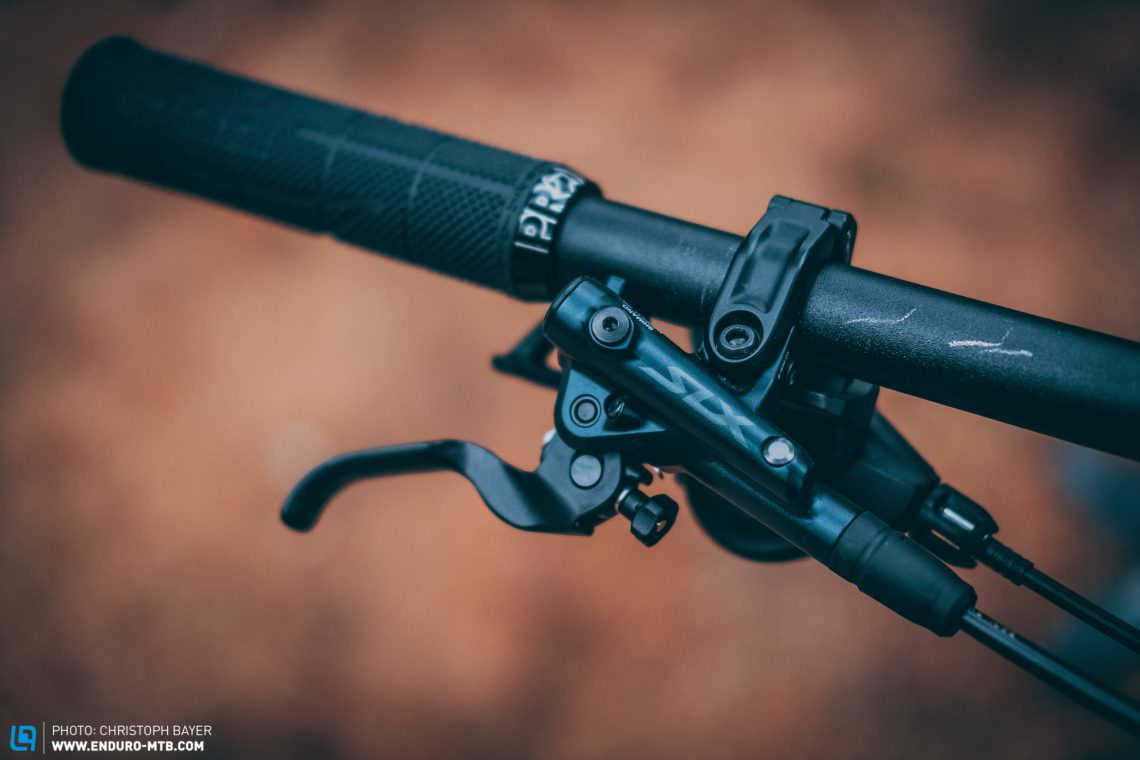
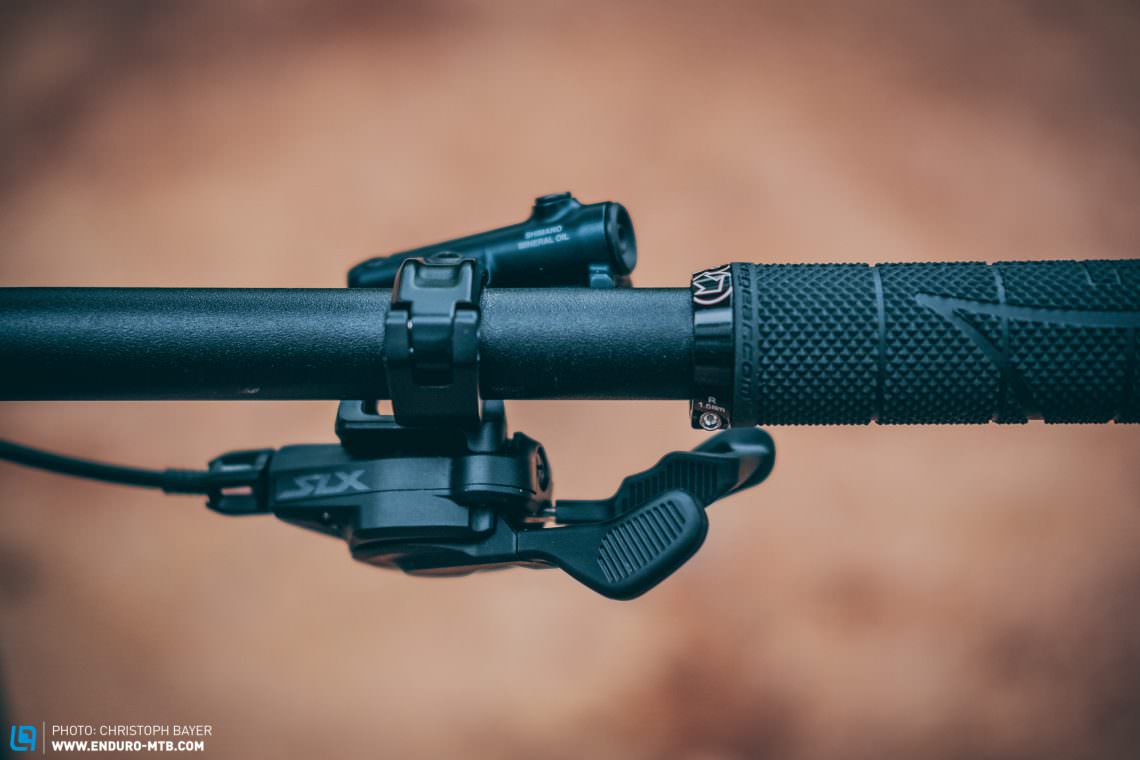
When it comes to the rotors, however, there are some major differences between models. Whilst both rotors (TR-MT800 for XT and SM-RT70 for SLX) implement Shimano’s ICE-TECH technology, which combines a soft aluminium core with a robust steel shell, the XT rotors feature additional cooling fins. On the scales, a complete Shimano XT four-pot brake including rotors and pads reads 410 g, and the equivalent SLX version weighs in at 444 g – which makes it 34 g heavier.


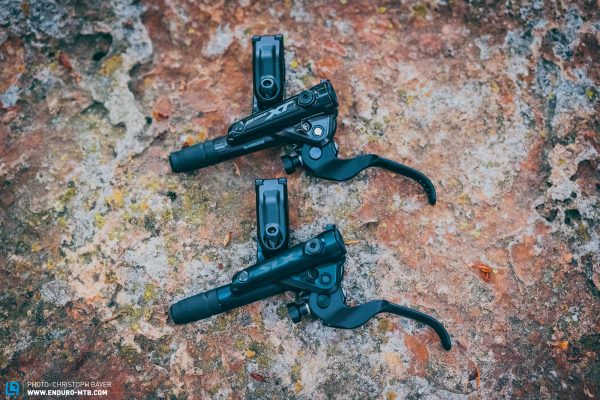
The Shimano XT M8100 and SLX M7100 disc-brakes on the trail
We had the opportunity to take a closer look at Shimano’s new two-piston XT and four-piston SLX brakes and test each model for a whole day on the sunny hills of Girona. Although the downhill runs were too short to properly assess the overall performance and durability of the brakes, our 90 kg test-rider Christoph was able to take home some valuable insights.

Except for the free-stroke adjuster and dimpled blade on the XT model, there are no visible differences between the XT and SLX levers – and both versions look a lot like the XTR-Trail version. Adjustments are quick and easy to implement, but the design of the new support forces the lever-clamp far into the bar-centre. The lever blade itself is a little bit wider than its predecessor. The free-stroke adjustment-screw of the XT model seems to have a merely decorative function, and after playing around with it for a while we just ended up turning it all the way in.
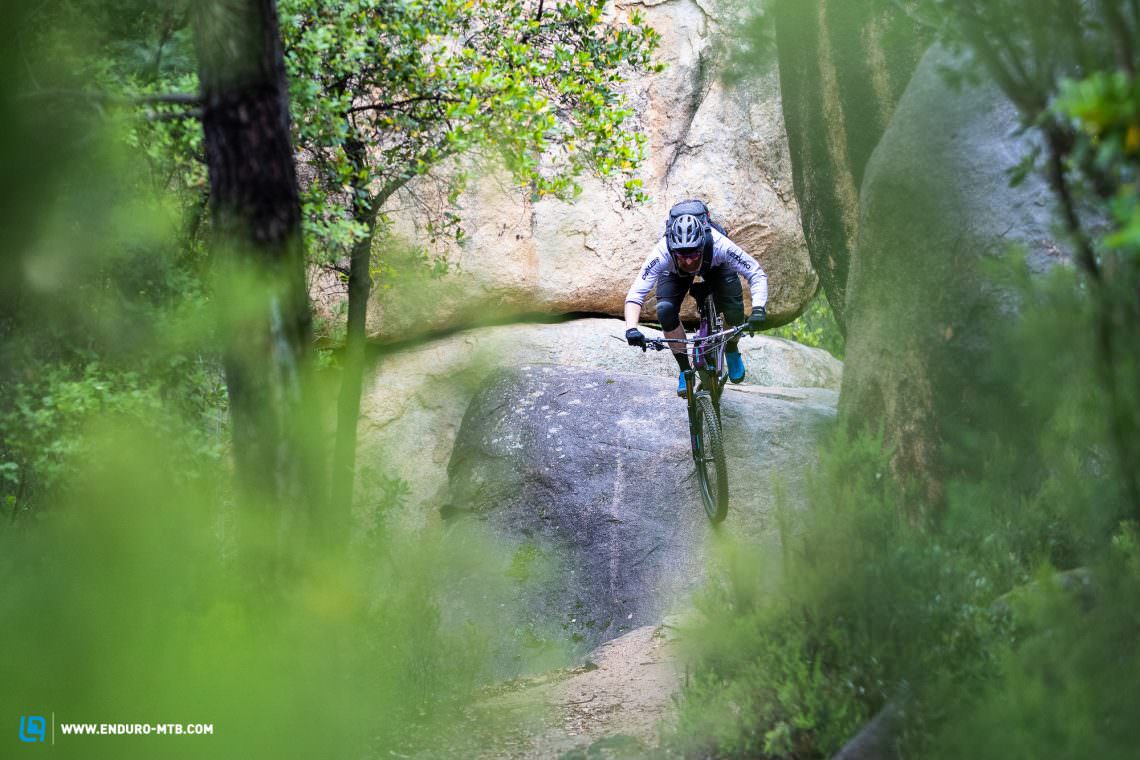
In good-old Shimano fashion, the latest generation of XT and SLX brakes delivers a well defined, sharp bite and at no point in this test did we notice the wandering bite-point typical of older XT versions. Even with small-ish 180 mm rotors, the four-pot SLX provides good and consistent deceleration. Hard braking manoeuvres? Hell yeah! Even in wet and slippery conditions the brakes provide superb modulation.

Prices and availability
According to Shimano, the new brakes will be available starting June 14th 2019. Euro prices have not yet been announced yet. Since Shimano doesn’t disclose retail prices, distributors are currently trying to work them out.
Our take on Shimano’s new XT and SLX brakes
After two days of extensive testing, we were particularly impressed with Shimano’s new four-pot brake. This provides superb modulation, tons of power and is by no means inferior to its bigger sibling the XTR – except for weight and aesthetics. If you can live with the extra few grams and don’t need a free-stroke adjustment (which actually doesn’t even work that well) the new Shimano SLX is a very powerful brake with a presumably attractive price tag.
Here you’ll find our review to the all-new Shimano XT- und SLX-drivetrain: First Review: Shimano XT M8100 and SLX M7100 – presenting Shimano’s entry-level 12-speed drivetrains
For more Information head to bike.shimano.com
Did you enjoy this article? If so, we would be stoked if you decide to support us with a monthly contribution. By becoming a supporter of ENDURO, you will help secure a sustainable future for high-quality mountain bike journalism. Click here to learn more.
Words & Photos:









